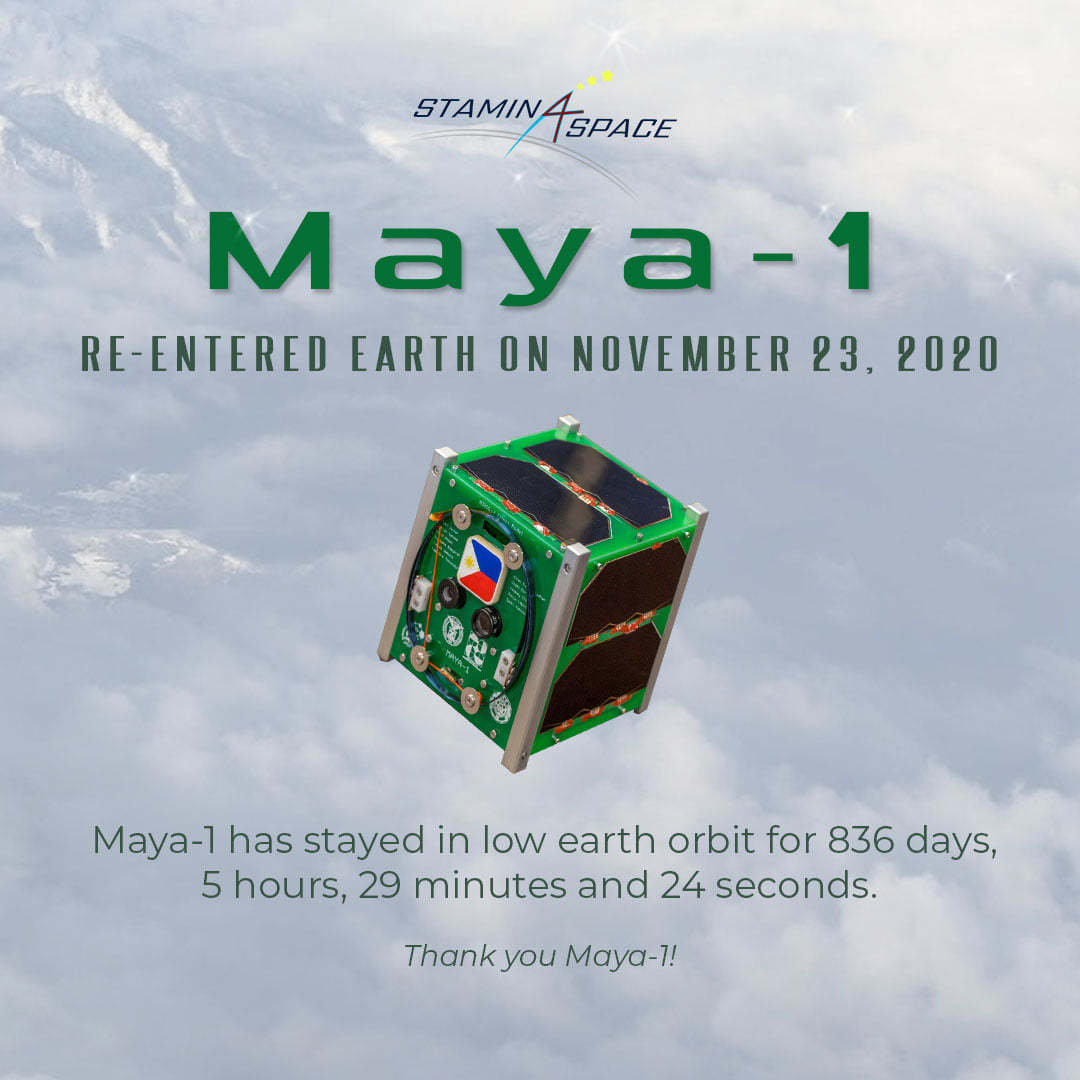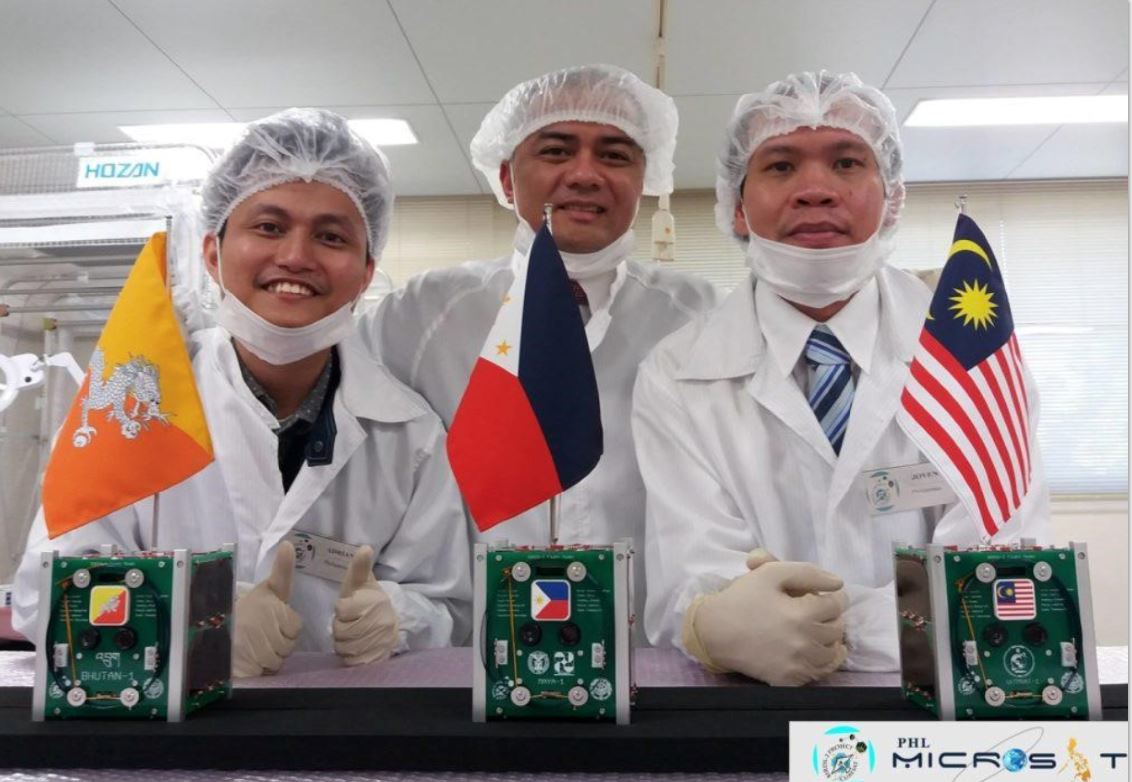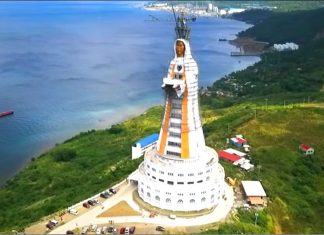
The first Philippine-made Maya-1 nanosatellite developed at the University of the Philippines has successfully completed its mission and re-entered the Earth’s atmosphere after 2 years, exceeding its projected travel in outer space.
The cube satellite that is named after the Philippines’ former national bird, the Maya (Chestnut munia), has been helping researchers all over the country since being launched into space aboard a Falcon 9 rocket in Florida, United States on June 29, 2018.
Maya-1 weighs barely over a kilogram while carrying hardware “that could facilitate communication in disaster scenarios”.
“Initially, the satellite was expected to stay in orbit for less than a year only, but it had stayed in orbit for about 2 years and 4 months,” said Adrian Salces, one of the developers of the Filipino nanosatellite that flew back to Earth on November 23, 2020.
Developed under the STAMINA4Space program (formerly known as PHL-Microsat) jointly implemented by the University of the Philippines (UP) Diliman and the Department of Science and Technology (DOST), Maya-1 was created by Filipino graduate students Adrian Salces and Joven Javier as one of the three cube satellites (CubeSats) for the Kyushu Institute of Technology’s (KyuTech) BIRDS-2 project.

One of the missions of the 1-unit (1U) CubeSat is the “Store-and-Forward (S&F) System, where it collects data from ground sensor terminals within its footprint, saves it, and forwards the data to any member ground station” and had the capacity to communicate with ham radios on the ground as well as carry two cameras with wide-angle and narrow-angle lenses to capture various images and videos of the Earth.
Maya-1 has proven the Filipino’s capacity to build CubeSats and has been inspiring future developments in the Philippines. Maya-1’s successor, Maya-2, has been completed and turned over to the Japan Aerospace Exploration Agency (JAXA) on September 24, 2020.
Two new CubeSats, Maya-3 and Maya-4, are already in the works and being developed by a group of scholars under the Space Science and Technology Proliferation through University Partnerships (STeP-UP) Project.
The University of the Philippines (UP) Electrical and Electronics Engineering Institute (EEEI) will be training the second batch of Filipino satellite builders in nanosatellite engineering under the STeP-UP Program for the launching and development of Maya-5 and Maya-6.
Maya-1 follows the Philippines’ first microsatellite Diwata-1 in 2016, which was earlier confirmed to have completed its mission in April this year. Filipino space enthusiasts were treated to previously unreleased 10 images of various countries to mark Earth Day captured by the Philippines’ two microsatellites, Diwata-1 and Diwata-2.
SEND CHEERS in the comments below to the UP and DOST team for successfully bringing back to earth the first Philippine-made Maya nanosatellite as it completed its space mission!
Want to know how to be a Proud Pinoy? Like, Follow, Subscribe to GoodNewsPilipinas.com, and our socials on Facebook, Twitter, Instagram, Good News Pilipinas! TV on YouTube, for new story notifications, and e-mail newsletters for updates on more Filipino Pride stories










